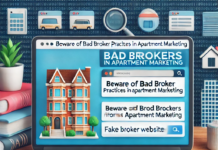Shopify powers a lot of the e-commerce world. As a result, both consumers and business owners face the prospect of scams. After all, where there is money to be made, there are individuals looking to take advantage. Fortunately, as Shopify continues to flourish, the platform certainly offers way more good than bad. However, everyone should be aware of the downsides (like everywhere on the internet) of a massive platform. To help, a few of the most well known Shopify scams that target consumers and business owners.
Additionally, as these Shopify-based scams proliferate, forums such as r/shopify offer warning signs and advice to avoid these situations. Plus, keep in mind that these scams are likely not “Shopify only” because they leverage the general technology and trends that power online commerce. So, it is important to conduct your due diligence when purchasing products online and/or working with unknown partners.
Shopify Scams Targeting Consumers
Online scams are rampant. Frequently, scams target consumers because their is a wide range of consumer knowledge. From sophisticated individuals to young teens or older customers, the range of knowledge varies. Therefore, scammers proliferate a variety of schemes and tactics to earn an easy dollar.
-
Off Platform Sales Scam
A common scheme starts off with a trusted purchase process. The so-called direct client scheme turns into a scam as routine purchases move off the e-commerce platform. For example, a “real” site with true inventory seeks consumers. Customers find the site and make a purchase. The scam site sells and delivers the merchandise as expected. Everyone is happy. However, after a few purchases, the scammers reach out and request a sale completed off the trusted platform due to excessive fees. The consumer makes the purchase, but the merchandise is never provided. In the end the scammer makes a little profit from each good sale and then a lot on the final sale.
-
Fake Stores
As e-commerce sites flourish, there is a marketing playbook that new brands leverage. Take a popular product or category, create a cool logo or image and promote it extensively on social media. For the most part, this strategy is quite successful as e-commerce brands built on Shopify are quite mainstream. However, scammers use the same playbook to build fake stores on Shopify. In the end, consumers have limited options to recover their money (unless they pay via credit cards and mark as invalid purchases).
Forbes recently shared a study from Fakespot that noted roughly 20% of Shopify sites are fake.
“Scammers seeking to exploit consumers through Shopify will usually start by knocking off popular products found on Amazon, other Shopify sites, or Kickstarter. Once they get visitors to their Shopify site the sales pitch continues with extra discounts, free shipping, and logos from the BBB and credit cards companies to entice purchases. After someone sends their payment, the scammers can do several things: keep the money and not send anything hoping that they do not challenge the payment in time; send the product and once the consumer realizes it doesn’t match what they were sold its on the customer to return it to get their money back; or they send a completely different product that costs next to nothing, forcing consumers to also return the product to get their money back.”
Shopify Scams Targeting Businesses
Not only do scammers look to steal from consumers, but they also create detailed plans to take from businesses and suppliers as well. In particular, fraudulent purchases cost Shopify-based business a lot of money. Although Shopify does take an active effort to protect sellers on the platform, they charge a substantive fee to reimburse companies for fraudulent purchases.
-
Triangulation Scam
The triangulation scheme is one of the more profitable scams. As a result, this is also a fairly common tactic operated by online crooks. In this scheme, scammers create real Shopify sites and essentially create a dropshipping business. Except, instead of selling merchandise they own, they buy the inventory with stolen credit cards. In the end, the consumer on their site receives their goods (so it is not a consumer scam). Although the goods are purchased with a stolen card and therefore, likely to be deemed stolen merchandise. The scammers receive money, but the credit card company refutes the charge to buy the inventory, so the supplier is out of merchandise and money.
-
Counterfeit Return Scheme
Although not solely used on Shopify, the counterfeit return scheme is an age old classic scam that only grows in a mail order business. In this scam, consumers make a purchase, then issue a return. However, rather than return the correct product, the scammer returns a similar (and cheaper product). In the end, the consumers either receive the correct product and money back (depending on the business return policies). Fortunately, businesses can protect themselves by creating returns with this scam in sight or simply adding unique identifiers (such as serial numbers) on your products.
-
Duplicate Store Scheme
The duplicate store scheme works exactly as it sounds. In this scam, fraudsters mimic a popular site and either fail to provide the merchandise or sell low-quality goods. However, based on the ubiquity of the Shopify platform, fraudsters spin up duplicate store fronts with ease. Shopify has grown in popularity because it is easy to create an e-commerce platform. Unfortunately, conniving scammers can also create duplicate or false store fronts with the same ease. Fortunately, as this scam proliferates, Shopify has taken pro-active steps to weed out the fraudulent store fronts. In the end, this scam harms consumers and business owners, but ideally Shopify will stop fraud fairly quickly.
How to Protect Yourself from Shopify Scams
For consumers and business owners, some common sense practices help protect your interests. For example, as a consumer always use a credit card to make online purchases. If you end up mistakenly making a purchase from a fake site, then you can make a claim to your credit card company and they will stop payment. This is a simple way to protect your interests. Additionally, as fraudsters continue leveraging social media sites (and this is most likely where you’d find the site), read a few of the comments before making a purchase. For new brands and companies, conducting some due diligence is always a good idea.
For business owners, protection is a little more difficult. Therefore, for simple scams like fake returns, then you most likely have practices in place to recognize your merchandise. However, for purchases with fake credit cards, there are limited options to protect your business. As Shopify scams continue (and there is no reason to think they won’t remain prevalent), then keep a close eye on the Shopify community message board.
For example, as a result of client complaints, Shopify takes steps to address the fake or duplicate store fronts. Additionally, certain Shopify payment tiers include fraud protection (at a cost). Finally, to protect your business from the risk of severe loss, institute a verification step in your checkout process for large purchases. If you accept some fraud is possible (and likely in-store or online), then determine what amount is significant to your business. If a consumer makes a purchase above that amount, then reach out and contact the consumer to confirm the purchase. In most cases, if they are a scammer, then they likely provide incorrect identification information (like a fake phone number).
In the end, buyer beware remains an apt analogy. However, by understanding that fraud exists, you can work help reduce your risks of succumbing to a Shopify scam.





